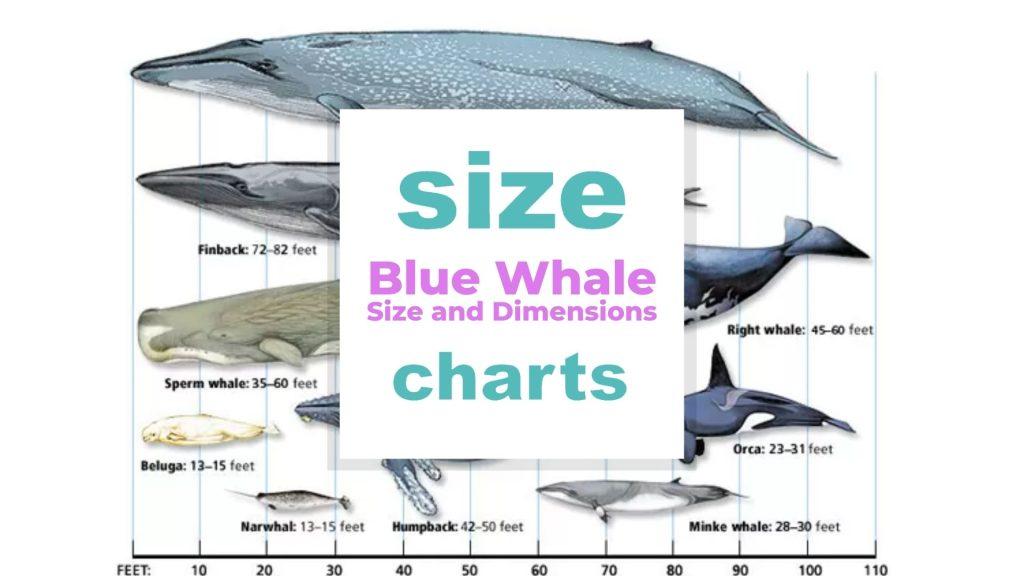Blue Whale Size and Dimensions
This size guide will give valuable information on the size of blue whale size. We’ll look into aspects like the average size of a blue whale and compare the measurements to popular mammals and historic animals like the megalodon. We’ll also compare the size of a blue whale to ordinary objects.
The blue whale size is the largest animal known to have ever lived on this earth. They are thought to get as big as 100 feet (2400 inches or 6 meters) long and weigh up to 200 tons (400,000lb)! That is more than the weight of thirty elephants! With a heart that weighs close to 1,000 pounds (0.5 tons) and blood that is eight times thicker than our own, these creatures are truly amazing.

Blue Whale Size Table of Contents
- Blue whale’s size chart by habitat
- What is the relationship between blue whale sizes and their habitats?
- What size is the biggest blue whale?
Blue whale’s size chart by habitat
| Region | Average length (meters) | feet | Average weight (Female) | Male |
| Eastern North Pacific blue whales | 22.0 meters | (72.1 ft) | 112 | 100 |
| central and western North Pacific blue whales | 24 meters | (79 ft) | 100 | 88.5 |
| North Atlantic blue whales | 21–24 meters | (68–78 ft) | 87 | 80 |
| Antarctic blue whales | 25.4–26.3 meters | (83.4–86.3 ft) | 112 | 130 |
| Chilean blue whales | 23.5 meters | (77.1 ft) | 93 | 85 |
| pygmy blue whales | 21.3 meters | (69.9 ft) | 99 | 83.5 |
What is the relationship between blue whale sizes and their habitats?
Blue whales from the Northern sphere are smaller than blue whales from the Southern Sphere. Also, researchers observe that blue whales cannot surpass the 34-meter length (112 feet) because this would overwhelm their energy and metabolic functions.
Blue whales measure different lengths in their various oceanic habitats. Most adult females in the Pacific grow between 22 to 25 meters (82 feet) long. Those in the Atlantic measure between 20 to 24 meters (78 feet), while blue whales in the Antarctic can measure beyond 26 meters long.
What size is the biggest blue whale?
The longest blue whale ever recorded, a female, measured 110 feet and 17 inches in length, equivalent to 34 meters. The only other blue whale which came close to the record length was a female, which measured 109 feet long.
Another female, the heaviest ever recorded, was captured in the 1940s and weighed 419,000 pounds, equivalent to 209 tons. Scientists captured and measured the longest whale in the Atlantic waters.
Another group of researchers measured the heaviest blue whale, which lived in the Antarctic waters.
Picture in this post is by Georg Wolf on Unsplash

